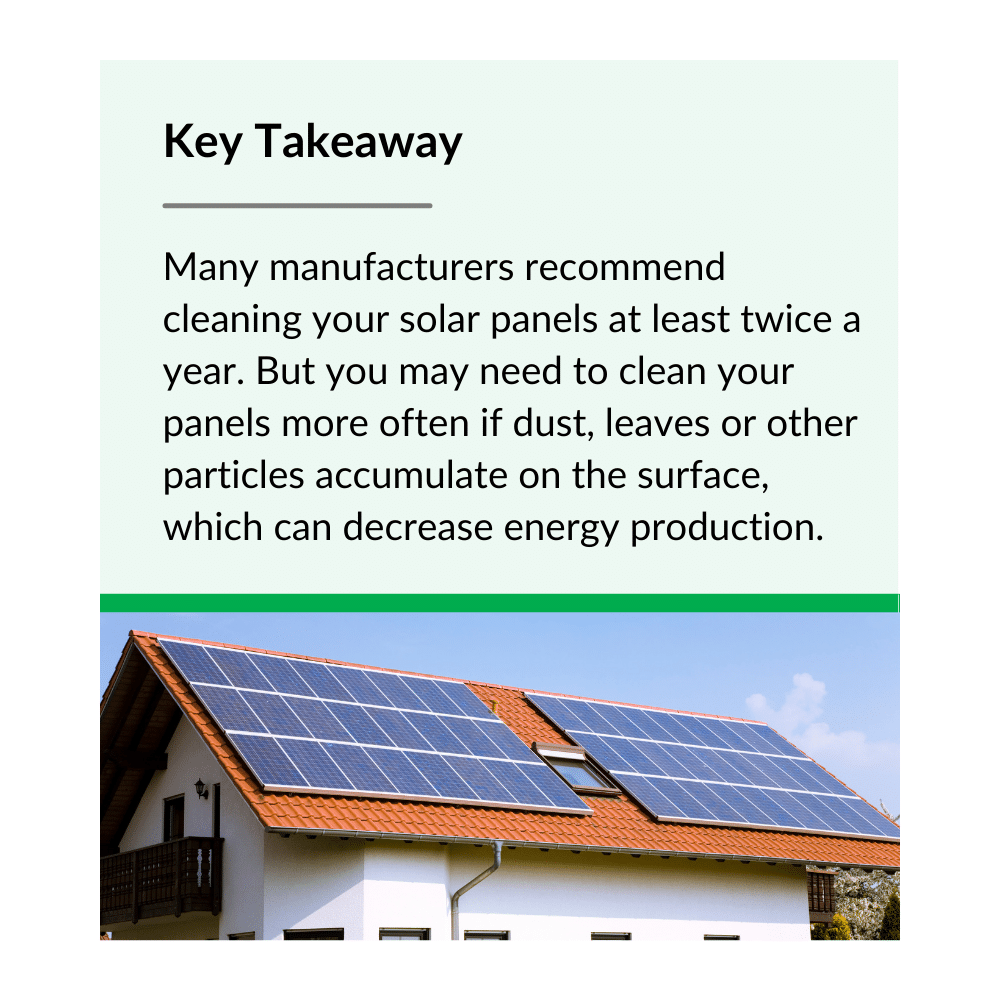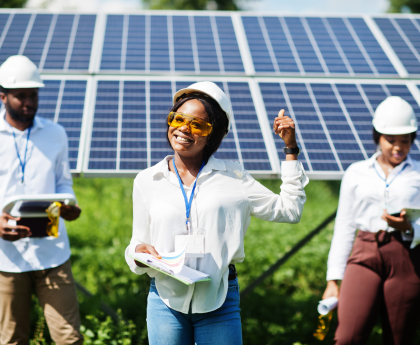Residential solar panels need little maintenance other than regular cleaning, but you must use suitable tools and methods to prevent damage. Generally, photovoltaic (PV) modules have simpler maintenance needs than other power generation systems since they have no moving parts subject to mechanical wear. Here are some recommendations on how to clean solar panels properly:
Clean Your Solar Panels at Least Two Times per Year
Many solar manufacturers and installation companies, like SunPower and NRG Clean Power, recommend cleaning your PV modules at least twice per year. Depending on site conditions and the weather, you may need to clean your system more frequently. For example, dust will accumulate faster on solar panels if there is a large construction project near your home.
Rain can clean your solar panels for free, washing away built-up material such as dirt and bird droppings. However, you should always conduct a visual inspection after extreme weather, to make sure your solar panels are still in good working condition.

Avoid Abrasive Cleaning Tools and Chemical Agents
You should never clean solar panels with roof rakes, hard brushes or other tools that may scratch their surface. Also, avoid chemical cleaning agents since they can also cause damage. Soft brushes and squeegees are suitable for solar panel cleaning, or you can use a leaf blower or garden hose.
Never Wash Solar Panels When They Are Hot
You can wash solar panels with a garden hose, but you should never do this on a hot summer day. PV modules reach high temperatures under the sun, and the sudden cooling effect caused by washing can cause cracks on their surface. Keep in mind that your solar panels may still be warm after sunset, especially if the weather has been particularly hot.
Watch Out For Drops in Efficiency
Dust build-up reduces the energy output of solar panels over time. Many of the solar inverters used in PV systems have mobile apps, which means you can keep track of daily productivity. You can expect low electricity output on cloudy days, but if you notice low productivity in sunny weather conditions, your panels may be covered by leaves or other objects.
If your solar inverter does not have built-in energy monitoring, you may not notice lower-than-average productivity. Low solar energy outputs will increase your energy consumption from the grid, and you will know there is an issue when the next electricity bill arrives. We recommend getting a power monitoring system if not included with your solar panel installation.
Electricity output will also drop if your solar panels or other system components suffer a malfunction. However, this should not be a problem if you have solid product warranties from the equipment manufacturer and a workmanship warranty with your solar company. These warranties should cover performance issues at no cost.
Even with proper maintenance, solar panels will gradually lose performance over time. However, degradation happens at a very slow rate if you purchase high-quality solar panels, averaging just a 0.5% efficiency loss per year. This means you will still get over 90% of your panels’ initial energy output even after 20 years of use.
This post was originally published on 3rd party site mentioned in the title of this site






